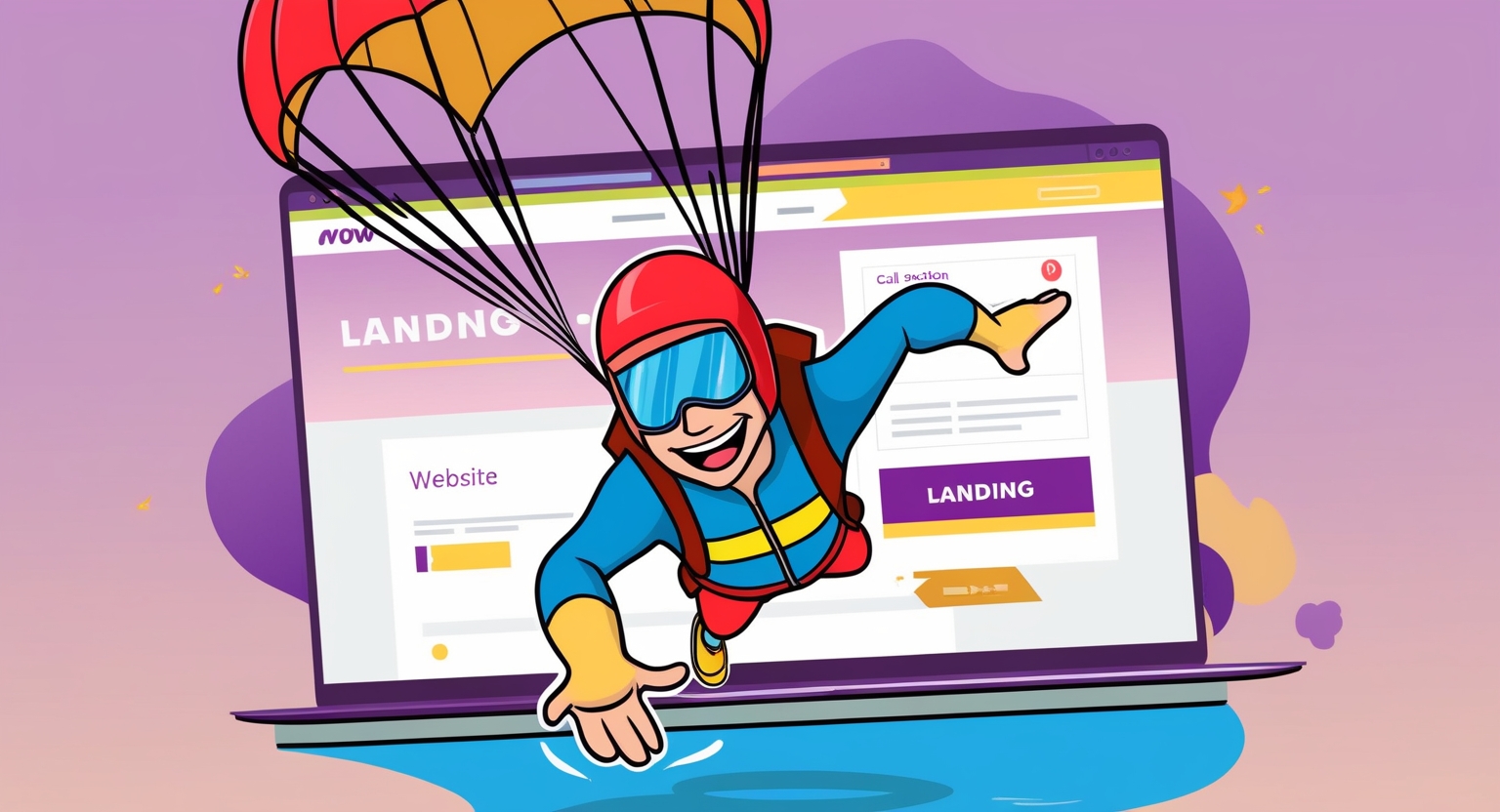What is a Landing Page? Benefits & Examples
What is a Landing Page?
A landing page is your digital marketing secret weapon—a Super-Focused web page designed with one purpose: turning visitors into action-takers. Whether it’s signing up for a newsletter, downloading an e-book, or making a purchase, every element of this page is crafted to navigate the visitor toward the desired Action. Unlike traditional web pages, which have multiple buttons, CTA, links,… landing pages eliminate the clutter and laser-focus on driving a single conversion. This precision makes them incredibly effective for boosting leads, sales, and overall business growth.

The Purpose of a Landing Page
The primary purpose of a landing page is to convert visitors into leads or customers. This is achieved by removing distractions and giving a clear, focused call-to-action (CTA). Whether it’s to “Sign Up Now,” “Get Started,” or “Download Free Guide,” the CTA should be prominently displayed and directly related to the content on the page.
Key Elements of an Effective Landing Page
- Compelling Headline: The headline is the first thing visitors see when they land on the page. It should be attention-grabbing and communicate the value proposition clearly. A strong headline sets the tone for the entire page and should align with the ad or link that brought the visitor there.
- Concise and Persuasive Content: The content should be brief, focused, and persuasive. Highlight the benefits of the offer and address any potential concerns the visitor might have. Bullet points, subheadings, and short paragraphs make the content easier to scan and understand.
- Visual Elements(optional): High-quality images, videos, or infographics can enhance the landing page by making the content more engaging and visually appealing. For example, a landing page promoting a software tool might include a demo video showing how the tool works.
- Strong Call-to-Action (CTA): The CTA should be clear and compelling, encouraging the visitor to take the desired action. Use action-oriented words like “Join now,” “Get it now,” “Try it today,” or “Download now.” The CTA button should stand out visually with contrasting colours.
- Lead Capture Form: If the goal of the landing page is to collect leads, include a form that asks for the visitor’s name, email, or other relevant information. Keep the form short and simple to reduce friction and increase the likelihood of completion.
- Social Proof: Including testimonials, reviews, or trust badges can build credibility and reassure visitors that they are making a smart decision. For instance, a landing page for a webinar might feature testimonials from past attendees who found the content valuable.
- No Distractions: Unlike other web pages, a landing page should have minimal navigation options. The goal is to keep the visitor focused on the CTA without being distracted by other links or menu options.

Types of Landing Pages
- Lead Generation Landing Pages: These pages are designed to collect visitor information, usually through a form. They are commonly used for gated content, such as e-books,
 whitepapers, or webinars.
whitepapers, or webinars. - Click-Through Landing Pages: These pages act as a gateway between an ad and the final destination. They provide enough information to persuade the visitor to click through to another page, often a sales page or e-commerce product page.
- Sales Landing Pages: Designed to convert visitors into customers, these pages provide detailed information about a product or service, often including pricing, features, and customer testimonials, along with a clear CTA to make a purchase.
How Landing Pages Drive Business Growth
Landing pages are very essential for any marketing campaign because they provide a focused experience for the visitor’s needs and interests. By targeting specific audiences with relevant content and offers, landing pages can significantly increase conversion rates. For example, an e-commerce business might create different landing pages for different product categories, each with tailored messaging and CTAs to maximize conversion rates.

Moreover, landing pages provide valuable insights into visitor behaviour and campaign performance. By tracking various metrics such as conversion rates, bounce rates, and time scrolling on page, businesses can improve their strategies and improve their marketing ROI.
Best Practices for Creating High-Converting Landing Pages
- Align Content with Ad Copy: Ensure that the messaging on your landing page matches the ad or link that led visitors there. Consistency between the two increases trust and sets clear expectations.
- Optimize for Mobile: With more users accessing the web via mobile devices, your landing page should be fully responsive. This means it should look and function well on screens of all sizes.
- A/B Testing: Experiment with different headlines, images, CTA buttons, and form fields to see which variations perform best. A/B testing is a powerful way to optimize your landing pages for better results.
- Use Urgency and Scarcity: Creating a sense of urgency (e.g., “Offer ends soon!”) or scarcity (e.g., “Only 5 spots left!”) can motivate visitors to act quickly, increasing conversion rates.
- Keep It Simple: Avoid overwhelming visitors with too much information or too many options. Keep the design clean and focused, with a single, clear call-to-action.
The Fin al check
al check
You’ve built your landing page, it looks amazing, and you’re ready to unleash it on the world. But hold on a second. Before hitting publish, take a step back and put on your consumer hat. Here’s what you need to do:
- Proofread like a Pro: Typos and grammatical errors scream unprofessionalism. Double-check everything, from headlines to captions.
- Does it Flow? Imagine you’re a visitor. Does the landing page guide you seamlessly towards the CTA?
- Is it Mobile Optimized? Grab your phone and navigate the landing page. Does it load quickly and offer a smooth user experience?
Conclusion
A well-crafted landing page is a crucial component of any digital marketing strategy. It provides a streamlined, targeted experience that guides visitors toward a specific action, whether it’s signing up for a newsletter, downloading a resource, or making a purchase. By focusing on a single goal and eliminating distractions, landing pages can effectively drive conversions and contribute to business growth.




![What is a Funnel? [Marketing Version]](https://hma-media.com/wp-content/uploads/2024/05/pexels-thirdman-8940478-768x512.jpg)

